#CHIP Program
Text
What Is The Cost Of CHIP Health Insurance?

The Children's Health Insurance Program (CHIP) provides low-cost health coverage to children in families that earn too much money to qualify for Medicaid but cannot afford private insurance. CHIP is a vital safety net for millions of children in the United States, ensuring they have access to essential medical services. Understanding the cost of CHIP health insurance involves examining various factors, including eligibility, premiums, copayments, and coverage benefits.
Eligibility for CHIP varies by state but generally extends to children from low-income families. In most states, children up to age 19 whose families earn up to 200% of the federal poverty level (FPL) are eligible for CHIP coverage. Some states have expanded CHIP eligibility to higher income levels or extended coverage to pregnant women. Additionally, eligibility criteria may consider factors such as citizenship status and residency.
One of the key aspects of the CHIP program that makes it attractive to eligible families is its affordability. CHIP is designed to be affordable for low-income families, with premiums and cost-sharing requirements kept minimal. Premiums for CHIP coverage typically range from zero to modest amounts, often significantly lower than private insurance premiums. Many states subsidize CHIP premiums to ensure they remain affordable for eligible families.
In states where premiums are required, they are usually based on a sliding scale tied to family income. Families with lower incomes may pay lower premiums or no premiums at all, while those with higher incomes may pay slightly higher premiums. This sliding scale helps ensure that CHIP remains accessible to families across different income levels.
Moreover, CHIP imposes cost-sharing measures such as copayments and deductibles, but these are generally much lower than those in private insurance plans. Copayments for services like doctor visits, prescription medications, and hospital stays are nominal, often ranging from a few dollars to no more than $50 per visit or service. Deductibles, if applicable, are also modest compared to private insurance plans, providing families with financial predictability and peace of mind.
CHIP coverage benefits are comprehensive and typically include essential services such as:
Preventive care: Regular check-ups, immunizations, and screenings to ensure children stay healthy and detect any health issues early.
Doctor visits: Access to primary care physicians and specialists for medical consultations and treatment.
Prescription medications: Coverage for necessary medications prescribed by healthcare providers.
Hospitalization: Coverage for inpatient hospital stays and related services.
Emergency services: Coverage for emergency room visits and urgent care services.
Dental and vision care: Basic dental and vision services, including check-ups, cleanings, and eyeglasses.
Mental health and substance abuse services: Coverage for mental health counseling, therapy, and treatment for substance abuse disorders.
By providing comprehensive coverage for essential healthcare services, CHIP ensures that children have access to the medical care they need to thrive. This coverage extends beyond physical health to encompass mental and dental health, addressing the holistic needs of children and promoting their overall well-being.
In addition to the direct financial costs of CHIP coverage, there are also indirect benefits that contribute to cost savings for families and society as a whole. By ensuring children have access to preventive care and early intervention services, CHIP helps prevent costly health complications and hospitalizations down the line. Healthy children are more likely to succeed academically and socially, reducing the burden on educational and social service systems.
Overall, the cost of CHIP health insurance is designed to be affordable and accessible for eligible families, with premiums and cost-sharing measures kept low. This affordability, coupled with comprehensive coverage benefits, ensures that children from low-income families can access the healthcare services they need to thrive and reach their full potential. As a cornerstone of the nation's healthcare safety net, CHIP plays a crucial role in promoting the health and well-being of millions of children across the United States.
0 notes
Text
Why Chips Health Insurance PA Is The Ultimate Choice For Your Family's Health?

CHIP's health insurance in PA offers comprehensive coverage, affordability, and flexibility, ensuring your family's health needs are met. With no pre-existing condition exclusions, easy enrollment, and support services, CHIP provides peace of mind. It's the ultimate choice for families, offering essential healthcare coverage for children, regardless of financial constraints or medical history.
0 notes
Text
Three Key Things To Know about CHIP

The Children's Health Insurance Program (CHIP) is a critical initiative in the United States that addresses the healthcare needs of children in low-income families. Here are three key things to know about CHIP:
Purpose and Mission: CHIP was established in 1997 with the primary goal of providing health coverage to children in families that earn too much to qualify for Medicaid but still face financial barriers to obtaining private insurance. The program is a joint effort between the federal government and individual states, emphasizing the importance of ensuring that all children, regardless of their family's economic status, have access to essential healthcare services.
The program recognizes the significance of early intervention and preventive care in children's health. By addressing healthcare needs early on, CHIP aims to promote overall well-being and development, preventing more severe and costly health issues in the long run. This mission aligns with the broader national goal of reducing the number of uninsured children and improving health outcomes for vulnerable populations.
State Flexibility and Program Design: One distinctive feature of CHIP is its state flexibility. While there are federal guidelines and requirements, each state has the autonomy to design and implement its CHIP program to best meet the unique needs and demographics of its population. This flexibility ensures that the program can be tailored to address specific regional challenges and circumstances.
States can set their income eligibility thresholds, determining which families qualify for CHIP based on their financial situations. Additionally, states have the authority to define the scope of covered services and establish other program features. This adaptability allows for a more localized and responsive approach to healthcare delivery, acknowledging that the healthcare landscape and economic conditions vary across the country.
State flexibility extends beyond eligibility and service coverage; it also involves administrative aspects such as outreach and enrollment strategies. States can implement initiatives to ensure that eligible families are aware of the program and can easily navigate the enrollment process, further enhancing the program's effectiveness in reaching the intended beneficiaries.
Comprehensive Coverage and Impact: CHIP provides comprehensive health coverage for eligible children, encompassing a range of services essential for their well-being. These services typically include regular check-ups, immunizations, prescription medications, dental and vision care, and emergency services. By offering a broad spectrum of coverage, the program aims to address the diverse healthcare needs of children and promote a holistic approach to their health.
The impact of CHIP has been significant in reducing the rate of uninsured children in the United States. The program serves as a safety net for families facing financial challenges, ensuring that their children have access to consistent and quality healthcare. Research indicates that CHIP has contributed to improved health outcomes among enrolled children, enhancing their overall health and developmental trajectories.
The program's success is evident in the positive outcomes it has achieved, such as increased access to preventive care, timely medical interventions, and a reduction in unmet healthcare needs among children. These outcomes underscore the importance of targeted initiatives like CHIP in addressing health disparities and promoting health equity among the nation's youth.
In summary, CHIP plays a vital role in the U.S. healthcare system by addressing the healthcare needs of children in low-income families. Its mission, state flexibility, comprehensive coverage, and positive impact collectively contribute to the program's success in promoting the health and well-being of vulnerable populations, ensuring that all children have the opportunity to lead healthy and fulfilling lives.
0 notes
Text
various jrwi doodles i don't want to put as their own post + wips i'm. probably never gonna finish!




may revisit some of these wips at a later time, but for now they shall rest here.!
#jrwi#jrwi art#jrwi riptide#jrwi chip#jrwi niklaus#genuinely so proud of the exandroth-as-rumi design so i'll almost certainly be revisiting it#i just can't finish it on the drawing program i made that on#not gonna tag any other characters since none of those are finished but. idc if anyone else wants to add their tags.!#gorvamp art#<- i always forget to add that. augh
430 notes
·
View notes
Text
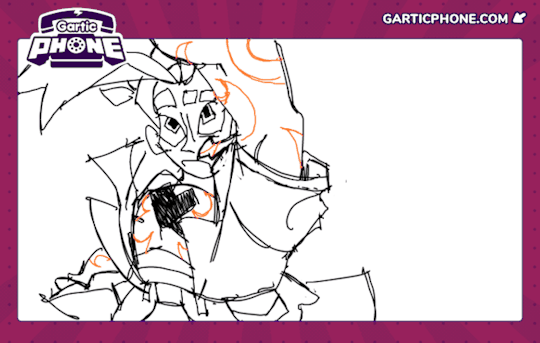
HOT MODE!! messing around with gartic again

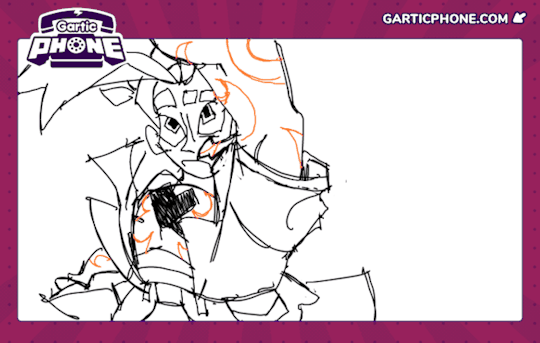

also alt versions idk what speed i like
#for a first shot at impact frames it's not awful! happy with the arc of movement at least#jrwi chip#jrwi#jrwi riptide#avepharts#animation#one may ask. “don't you have an animating program why not practice with that”. my answer is. idc.#gif#flashing#tw flashing
254 notes
·
View notes
Text
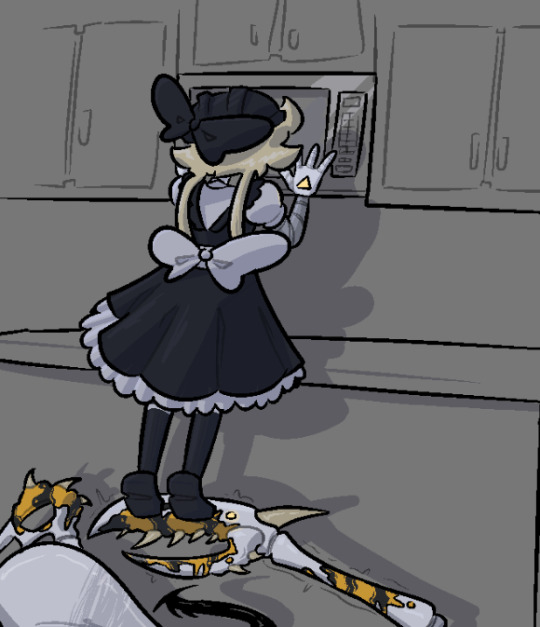

for how much i love to drag pngs around, it turns out that i actually don't know how to animate all too well
#granted i dont actually know how clips animation program works#im just drawing every frame seperately and smashing them together manually#anyway the image of cyn up against the microwave to look at a single potato chip entered my mind at three in the morning and i just had to#i also love switching shading styles on the fly#and also i hate backgrounds. incase you couldn't tell.#i seem to have an affection for drawing cyn scrunched up against the camera/window like that cause this is the second time i've done it#ignore the fact that solver and cyn are seperate here its not a headcanon im just dumb#anyway how tall do you think she actually is#art#murder drones#murder drones cyn#murder drones absolute solver#absolute solver#yes its khan pringles#expect more cyn and solver because im. they're a little silly#just noticed i mispelt drag sad face
735 notes
·
View notes
Text
"My guess is we are immune to the effects of the programming. Though I can't be 100% certain of it."

I wish WE could be 100% certain of it!

#foreshadowing#these writers kriffing excel at it#crosshair resisted the reprogramming but not the chip#tech resisted the chip but perhaps not the reprogramming#the bad batch#tech tbb#clone x#clone assassin#bad batch season three#tbb spoilers#bad batch spoilers
209 notes
·
View notes
Text
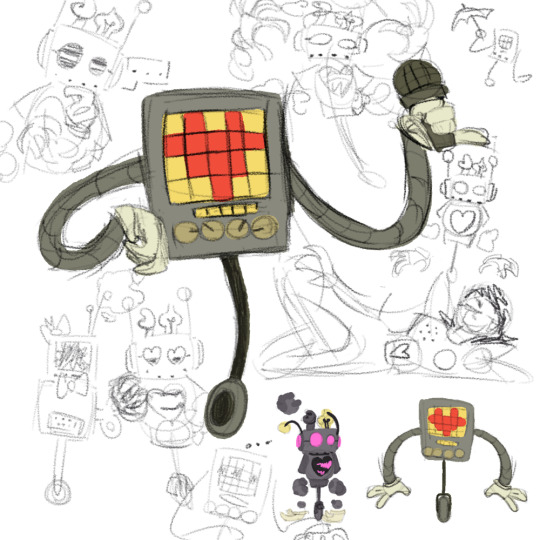
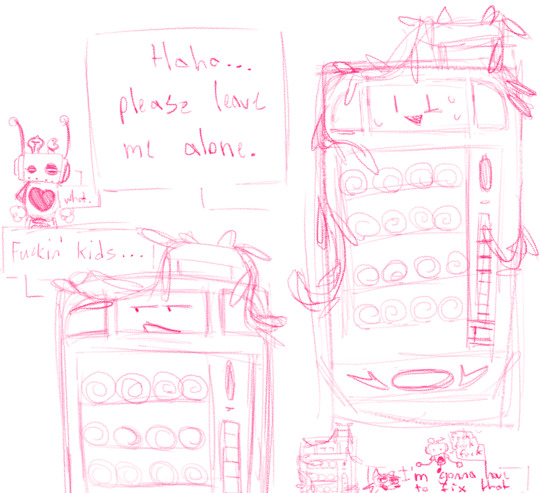

some undertale yellow (and undertale i guess-) doodles and other drawings
#silverware's art#undertale yellow#uty#uty axis#undertale yellow axis#undertale yellow vendy#uty north star#undertale yellow starlo#undertale mettaton#i had this idea that since axis is like. on a different grid thing from the other robots he was the only one with an actual censor.#like. the other robots would be programed to refrain from using vulgar language. but some (most) of 'em probably don't have actual censors#i just think its funny if vendy can say fuck and axis could just question how tbh-#i think i figured out how to draw north star a bit better now! i was drawing the hat too small before-#also. yeah. he probably is missing a tooth. or has at least a chipped tooth. 'cause why not#fun fact: i'm gonna post a couple drawings of Guardener in the next 24 hours (i hope) with a little bit of an idea i had :)#look out for that if you want!-
62 notes
·
View notes
Text
Dani in The Clone Wars
I just love the idea of Dani falling into the Star Wars universe (or alternatively the Star Wars universe is the same universe as the Danny Phantom universe they just happen to be in different parts of the universe) and meeting the clones. Cause like she’s a clone too. And not just any clone but a (technically) “defective” clone that originally had unstable DNA.
Like she meets the clones and just basically unknowingly trauma dumps on them. Just like “yeah I’m a clone to. I was supposed to be a boy but somehow came out a girl. And my genetic structure was super unstable for the first year of my life and I almost melted into a puddle of ectoplasmic goo because of it. But then my original Danny was able to stabilize me. My creator Vlad tried to kill me multiple times too. And also I’m the only surviving clone, all the other were to unstable and melted into goo!”
And the clones are all just horrified. Cause like A. She’s the only surviving clone of her batch and all her batch mates died. B. She was originally genetically unstable and for them something like that would have gotten them decommissioned, something her creator attempted to do to her but her original stopped it and saved her! And C. she’s just this tiny little child whose only like two-ish years old and she’s already been through so much!
The clones all make the executive decision to adopt her as their little sister! She’s now one of them! They will protect her with everything they’ve got!! And Dani just adopts them back. And she is a tiny little feral gremlin child, spirits have mercy on the souls of anyone who fucks with her clone brothers because she sure as hell won’t!!!
#danny phantom#Star Wars#star wars clone wars#DP x SW#Dani phantom#all the clone feels#Dani finds out about decommissioning and looses her shit#she goes absolutely feral on the Kaminoans#Dani accidentally overshadows one clone one time and because of this she finds out about the chips#she immediately informs the clones and the Jedi#the chips get removed quickly and quietly#after examining the chips they find what they were programmed to do#and who the programming was supposed to respond to#Palpatine gets outed as the Sith Lord#and Dani goes feral on him#Cause this fucker was planing on mind controlling her brothers and turning them into meat droids#meat droids that would have had no free will#and would have killed their friends#Palpatine doesn’t stand a chance against this tiny feral gremlin child#she throws his ass right out his window into traffic#just yeets him all over coruscant#he can’t even defend himself with his lightsaber cause the blade just passes right through her#and this is how Dani saved the galaxy from the sith
168 notes
·
View notes
Note
Hey, I don't know if you've said this before, but may I ask which program you use for digital art? I'm still trying to figure out which one I want to get because I wanted to try out something new. (I've drawn on Gimp and I feel like it's a lot better for editing images than it is for drawing ^^")
i got just asked that and replyed here
i use Photoshop. and i know its costy for a lot of people. so i recomend to look at the following programs
Krita
its free, lots of brushsettings, brush stabilizers, and vectors + text.
you can even do smaler animations in it.
if you would like to invest, you could try
Clip Studio Paint
i have artist friends that use this programm. its loved by many artist. its created by having artists need in mind. lots of brushes, stabilizers, vector lines + texts. animations option. a huge library or resources you can download form (carefull some could cost money) and 3D models to make the drawing process easyer. it also does this fancy recording your drawing thing we know form procreate. i think you can still get the old version without the subscription payment methode, which costs around 50 bucks.
Affinity Photo
i admit i used it once and it took me getting used to. but its fine.
the Affinity programs are like the counterpart to the AdobeCC.
i know some people recomend it as an alternative, and got this and more programs for a steal on black friday. currently they cost around 80 bucks for a one time payment. way cheeper then the CC. it does what PS does. so if you are an artist that is used to PS you could give it a shot
i want to honorably mention CorelDRAW because i began my digital drawing journey on that program like.... 15+ years agon... but its expensive....
-i am not gona say it but if you thought about it.... well... go for it!-
if you have the option of a ipad or screen touch tablet.
get a good stylus pen and check out the app store for digital drawing apps. there are lots of free ones out there. most popular i know of are:
Ibis Paint x - is free. and if you want to use all the tools and features you can by just watching one add and then everything is unlocked for like 8 hours. apart everything you need it also has this fancy procreate drawing recording option
procreate - its not free but as far i understood its an amazing program and just costs around 13 bucks? it only works on ipads.
but professionals use it, has animation option just like everything!
hope this helps!
(sorry idk how to link the apps)
#chip!ask#art programs#again.... i mean... exspecially about the... you know#just do it the good old ways#maybe with an eyepatch and a clothes hanger as hook to get the right vibe#you know???
63 notes
·
View notes
Text
How Does CHIP Put Health Coverage Within Reach?

CHIP, the Children's Health Insurance Program, has been instrumental in putting health coverage within reach for millions of children in the United States. Established in 1997, CHIP was designed to address the gap in healthcare coverage for children from low-income families who were ineligible for Medicaid yet unable to afford private insurance. Through a combination of federal funding and state administration, CHIP has made significant strides in improving access to essential healthcare services for vulnerable children.
Here's how CHIP achieves its goal of putting health coverage within reach:
Income-Based Eligibility Criteria: CHIP primarily targets children from families with incomes above the Medicaid threshold but below certain income limits. By basing eligibility on income, CHIP ensures that children from low-income households who might otherwise go without health coverage have access to affordable care. Eligibility criteria vary from state to state, allowing for flexibility to adapt to the unique needs of each state's population.
Comprehensive Coverage Benefits: One of the key ways CHIP puts health coverage within reach is by offering comprehensive benefits tailored to children's needs. These benefits typically include routine check-ups, immunizations, doctor visits, prescriptions, dental and vision care, and other essential services. By providing a wide range of services, CHIP ensures that children receive the care they need to stay healthy and thrive.
Affordable Premiums and Cost-Sharing: While CHIP coverage is comprehensive, it is also designed to be affordable for families with limited financial resources. Premiums and cost-sharing requirements for CHIP coverage are typically based on a sliding scale, with lower-income families paying lower premiums and out-of-pocket costs. This approach helps ensure that cost is not a barrier to accessing healthcare for eligible children.
Bipartisan Support and Stable Funding: CHIP has enjoyed broad bipartisan support since its inception, which has been instrumental in ensuring its continued success. Policymakers from both sides of the political aisle recognize the importance of providing healthcare coverage to children and have worked together to support and strengthen the program. Additionally, CHIP funding is typically authorized for multiple years, providing stability and certainty for states and families relying on the program for coverage.
Outreach and Enrollment Assistance: To reach eligible children and families, states conduct outreach and enrollment efforts to raise awareness about CHIP and help families navigate the enrollment process. Outreach efforts may include targeted advertising, partnerships with community organizations, and enrollment events. States also provide enrollment assistance through online portals, call centers, and in-person assistance to help families understand their options and complete the enrollment process.
Coordination with Medicaid and Marketplace Coverage: CHIP works in coordination with other healthcare programs, such as Medicaid and the Health Insurance Marketplace, to ensure seamless coverage for eligible children and families. States may use a single application and eligibility determination process for CHIP, Medicaid, and Marketplace coverage, simplifying the enrollment process and reducing administrative burden for families.
Flexibility for States: CHIP operates as a federal-state partnership, giving states flexibility to design and administer their own CHIP programs within federal guidelines. This flexibility allows states to tailor their CHIP programs to meet the unique needs of their populations, including eligibility criteria, benefits, and program administration. States can innovate and implement strategies to improve access to care and enhance the quality of services for children enrolled in CHIP.
Preventive Care and Early Intervention: By providing children with access to preventive care and early intervention services, CHIP program helps avoid more costly healthcare expenses down the line. Regular check-ups, immunizations, and screenings can detect health problems early and prevent the need for more extensive and expensive treatments later on. By investing in preventive care, CHIP improves health outcomes for children and reduces long-term healthcare costs.
In summary, CHIP puts health coverage within reach for millions of children by offering comprehensive benefits, affordable premiums, bipartisan support, outreach and enrollment assistance, coordination with other healthcare programs, flexibility for states, and a focus on preventive care and early intervention. Through these efforts, CHIP ensures that children from low-income families have access to the healthcare services they need to grow, thrive, and reach their full potential.
0 notes
Text
What Is A Children's Health Insurance Program?

The Children's Health Insurance Program (CHIP) is a federal-state partnership in the United States that provides low-cost or free health coverage to children from low-income families who do not qualify for Medicaid but cannot afford private insurance. CHIPS health insurance in PA offers comprehensive benefits, including doctor visits, immunizations, prescriptions, dental and vision care, and other essential services.
0 notes
Text
Compare CHIP With Other Health Insurance Programs

The Children's Health Insurance Program (CHIP) plays a distinct and vital role in the landscape of health insurance, catering specifically to the needs of children from low to moderate-income households. While there are similarities with other health insurance programs, such as Medicaid and private insurance, CHIP stands out in several key aspects.
Target Population:
CHIP: Primarily focused on providing health coverage for children up to the age of 19 in families with incomes too high to qualify for Medicaid but facing financial barriers to obtaining private insurance.
Medicaid: Offers health coverage for individuals and families with low income, including children, pregnant women, and adults, with eligibility determined by income and other factors.
Private Insurance: Available for individuals and families through various plans offered by private insurers, often with coverage options for children but requiring premium payments.
Income Eligibility:
CHIP: Targets families with incomes above Medicaid thresholds but still within the low to moderate-income range, varying by state.
Medicaid: Primarily for those with very low incomes, with eligibility determined by income relative to the federal poverty level (FPL).
Private Insurance: Open to individuals and families across income levels, with premium costs varying based on the plan and coverage.
Flexibility and State Control:
CHIP: Provides states with flexibility in program design, allowing them to tailor their CHIP programs to the unique needs and demographics of their population.
Medicaid: Jointly funded by the federal and state governments, with states having some flexibility in program design but adhering to federal guidelines.
Private Insurance: Governed by state and federal regulations but lacks the state-specific customization seen in CHIP and Medicaid.
Coverage Benefits:
CHIP: Comprehensive coverage for essential health services, including preventive care, immunizations, prescription medications, dental and vision care, mental health services, and specialty care.
Medicaid: Similar coverage to CHIP but may also include additional benefits specific to the Medicaid program, such as long-term care services.
Private Insurance: Coverage varies widely based on the specific plan but generally includes a range of services, with the potential for more extensive coverage options.
Cost-sharing and Affordability:
CHIP: Typically involves low or no-cost sharing for eligible families, ensuring affordability for those with limited financial means.
Medicaid: This may include minimal or no-cost sharing for eligible individuals, with some states implementing nominal premiums or copayments.
Private Insurance: Involves premium payments, deductibles, and copayments, which can vary widely based on the specific plan and coverage level.
Outreach and Enrollment:
CHIP: Often involves targeted outreach and education efforts to reach eligible families, with enrollment facilitated through state health insurance marketplaces.
Medicaid: Similar outreach strategies as CHIP, with enrollment through state-specific processes, including health insurance marketplaces.
Private Insurance: Relies on marketing efforts by private insurers, brokers, and employers, with enrollment through various channels, including employer-sponsored plans, individual marketplaces, or government exchanges.
Preventive and Early Intervention Focus:
CHIP: Emphasizes preventive care and early intervention, recognizing the importance of addressing health issues in children at an early stage.
Medicaid: Also places importance on preventive care, with a broader focus on meeting the healthcare needs of low-income individuals of all ages.
Private Insurance: This may include preventive care services but often places a greater emphasis on a broader range of healthcare needs for individuals and families.
In conclusion, while CHIP shares commonalities with Medicaid and private insurance in providing healthcare coverage, it stands out as a program uniquely designed to address the specific needs of children from low to moderate-income families. The targeted focus on pediatric care, state flexibility, and affordability measures make CHIP a crucial component in the effort to ensure comprehensive health coverage for children across the United States.
0 notes
Text
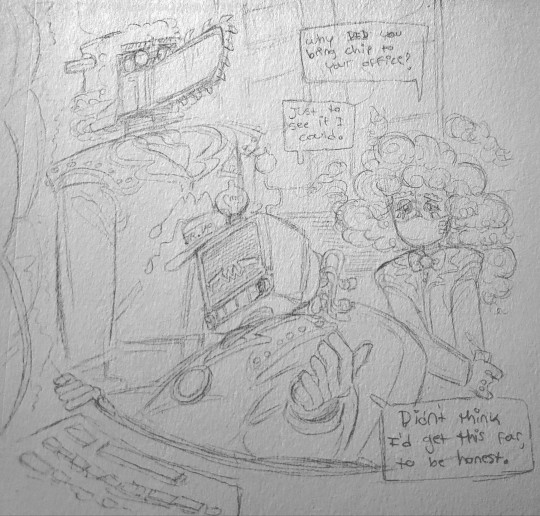
Lot's of questions were brought up that night -
#A moment from our AU#the power had gone out due to a murder investigation and everyone was supposed to go home...#misty stayed behind with Chip despite him being locked behind his override bevause she didn't want for him to be lonely...#Tawney played a blind eye and let her stay in his office#Cathal ended up summoning Chip through a broken access point in his coding#he was forced to fix it tho when Brian was notified of strange activity happening in Chip's programming#Misty thinks it's nice Cathal tried removing the override despite his attempts not working#ttcc#toontown corporate clash#toontown#toontown: corporate clash#au#ttcc au#maybe one day ill reupload this in better quality... im not a good photographer lol
37 notes
·
View notes
Text
114 spoilers ahead




+some ocs





And lastly a word from our sponsor

#jrwi#jrwi fanart#jrwi gillion#chip jrwi#oc art#ocs#gart#sorry for disappearing for a month again#my art program decided to explode#then reorder all my art#and delete what I was working on#anyway#see you in another month
9 notes
·
View notes
Text
Spent 3 hours coding and decided I don't care about anything anymore but I have chocolate so it's fine<3
#Chip Chatter#this isn't a vent I'm just tired LMAO#Never pick up RPGmaker kids. Worst mistake of my fucking LIFE.#It crashed like 10 times in the span of an hour while I was just writing DIALOGUE#I WASN'T. DOING ANYTHING HEAVY ON THE PROGRAM. IT WAS DIALOGUE.#but whatever I don't even care anymore#fnaf time. I love trans people
13 notes
·
View notes